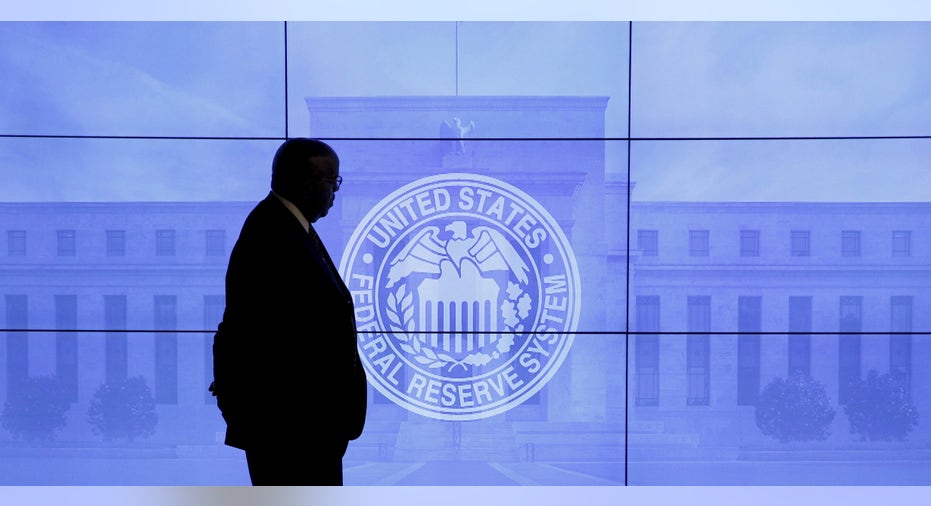Fed Flexes Muscle, June Rate Hike Still in Play

Just as investors got comfortable with the idea that the Federal Reserve would stand firm on interest rates in June, minutes from the central bank’s April meeting show a rate hike next month is still very much an option.
Citing continued improvement in U.S. economic data, including steady strength in the labor market, and inflation creeping higher, the Fed said tighter monetary policy isn’t out of the question at the end of its next two-day meeting.
“Most participants judged that if incoming data were consistent with economic growth picking up in the second quarter, labor market conditions continuing to strengthen, and inflation making progress toward the committee’s 2% objective, then it likely would be appropriate for the committee to increase the target range for the federal funds rate in June,” minutes from the April meeting, which were released Wednesday afternoon, read.
Markets were swift to react to the shift in sentiment from a Fed that has been particularly dovish through 2016. U.S. equity markets gave up sizeable gains as the broader averages dipped into negative territory during the final two hours of trading.
The yield on the benchmark 10-year U.S. Treasury bond strengthened, rising 0.123 percentage point to 1.882% as traders sold bonds. Yields move in the oppostie direction of prices. Meanwhile, Fed Funds futures, a tool used by investors to predict the likelihood of a change in U.S. monetary policy, showed odds of a June rate hike jump to 34% from just 19% ahead of the April minutes.
Brad McMillan, chief investment officer at Commonwealth Financial Network, said the central bank’s shift in expectations not to explicitly rule out a June rate hike was the biggest takeaway from the minutes – but he doesn’t think the Fed will actually move forward with the rate rise next month.
“[The meeting] is too close to the British referendum. There are too many impending risks,” he said. “Even though their opinion has changed, they’re not there yet in terms of needing to act immediately….I think they hold off until maybe July.”
The British referendum refers to a vote by members of the United Kingdom who will decide whether the nation should terminate its membership in the European Union. That vote comes just a week after the Fed’s June 14-15 meeting. While international financial conditions have become less important to the U.S. central bank, the April minutes showed it’s still a factor as some members said the risks were “roughly balanced,” and others said downside risks could still be lurking.
“While there had been recent improvements in global financial and economic conditions, downside risks to the forecast from developments abroad, though smaller, remained,” the minutes read.
However, the so-called Brexit referendum won’t be the only thing the Fed will take into consideration at its next meeting. Economic data is still very much a part of the Fed’s rate-rise equation.
“They will always be dependent on data,” Mark Hamrick, Bankrate senior economic analyst, said. “You have to grind through the next four weeks of data after a first-quarter GDP reading that came in at less than 1% growth, and the April jobs report that was below the six- and twelve-month trends.”
Recent data on the strength of the U.S. economy have been somewhat mixed. Consumer price inflation, confidence, and spending levels have risen, though factory and service-sector activity have diverged. Further, as Hamrick noted, first-quarter economic growth underwhelmed the markets, while wages have ticked higher.
He went on to say financial markets shouldn't get too worked up about what’s on the horizon for the rest of the year in light of the minutes combined with speeches by Atlanta Fed President Dennis Lockhart and San Francisco Fed President John Williams on Tuesday, who said two to three more rate hikes were possible before the end of the year.
Hamrick said there are a range of instruments markets could look to for clues about what the Fed is likely to do at its next meeting, but essentially, all are pointing to making markets aware that a summer rate rise is a possibility.
“Yellen is quite consistent in saying every meeting is live,” he said. “In the backs of the minds of FOMC members is a strong desire to get back along the path of normalization. Every amount of time that goes by that rates are at this low level means there are fewer bullets in the holster to use when a recession comes.”